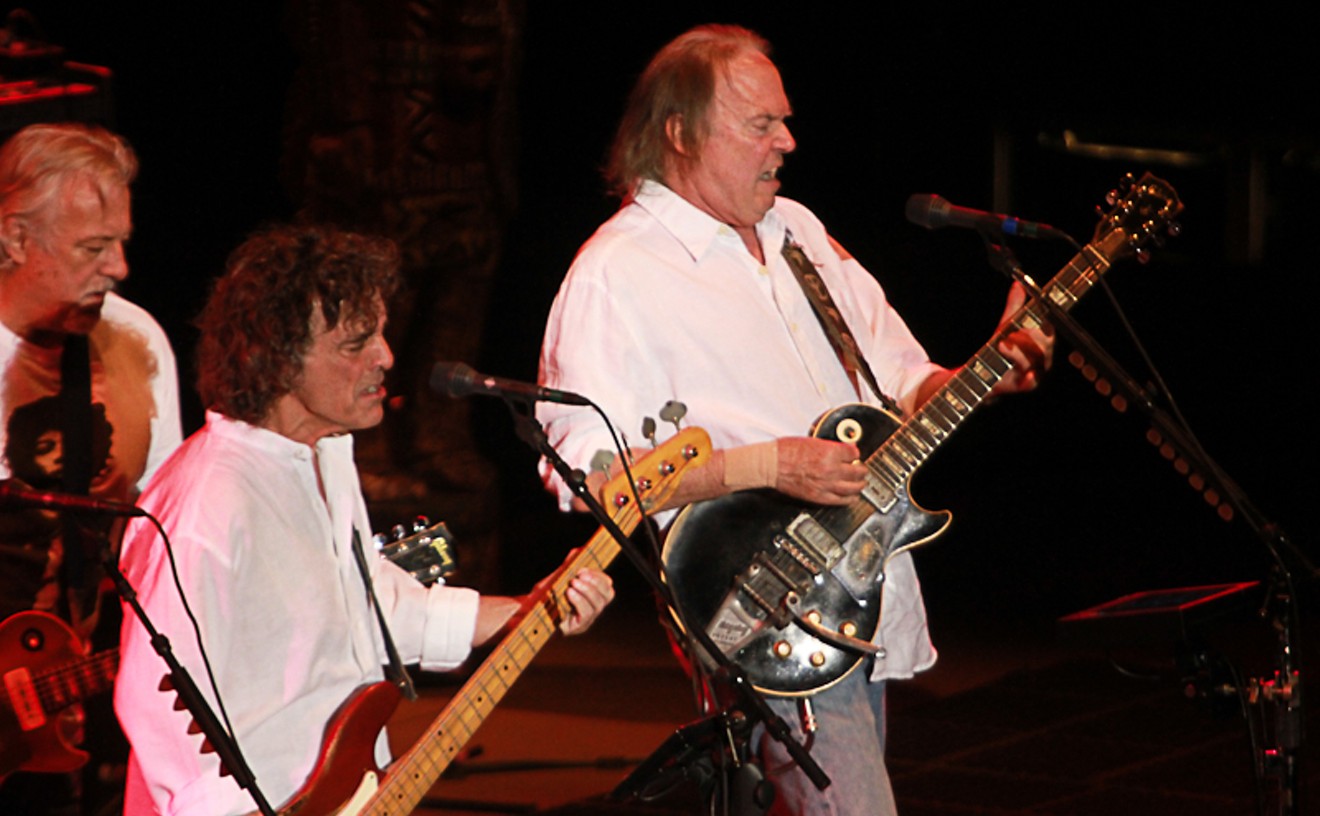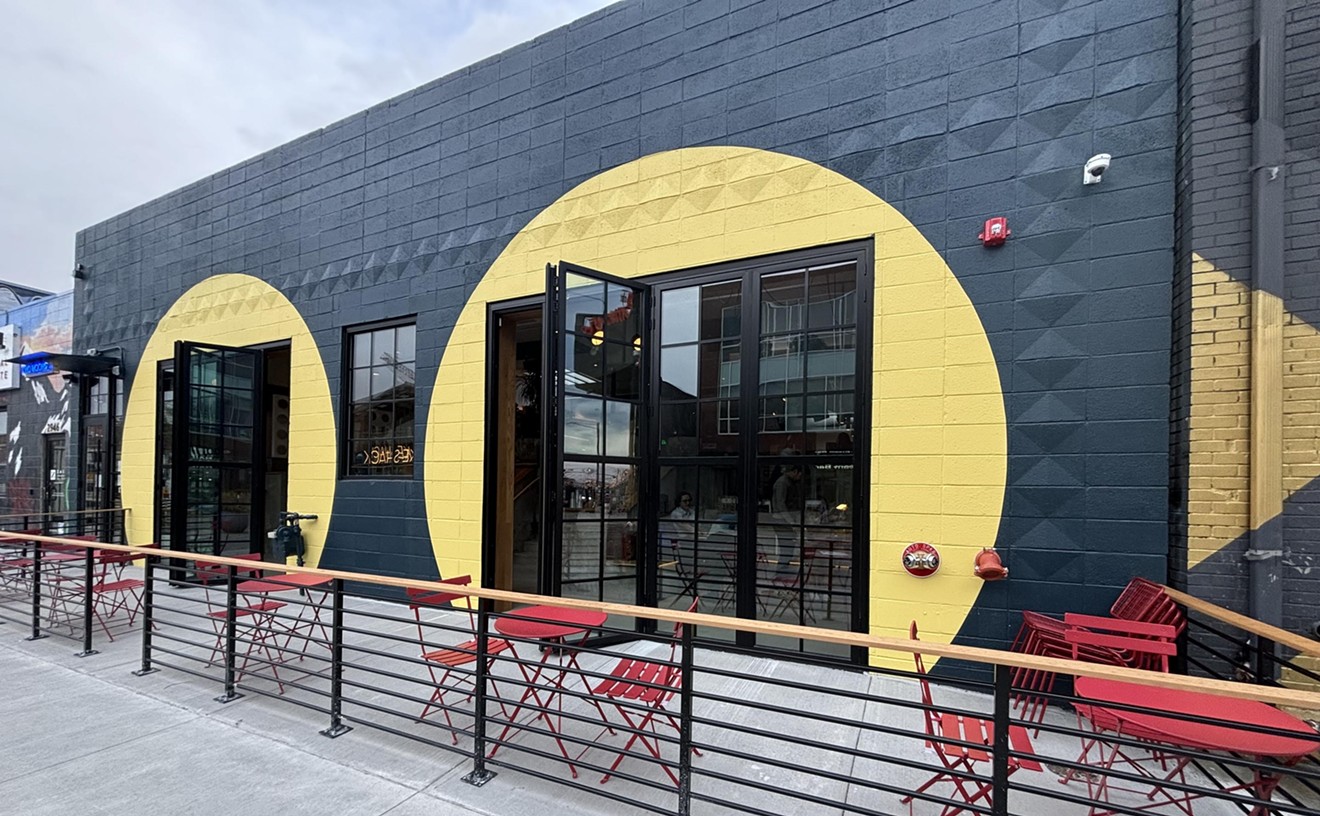This talented duo's seismic simulations -- whether intended or not -- often result in a highly entrancing listening experience, one in which low-end rumbling and shifting textures sustain a thrill topped only by the rippling body of Mother Nature herself. Considering that Quake -- the pair's first improvised collaboration as a duo, packaged on Cutler's RéR/Megacorp imprint -- drops more industrial hammers than Thor at a blacksmith's convention, it's little wonder that two such adventurous noise-dabblers christened their works with a name from the holy book of Richter scales. "Nearly always, titles are given to things afterward," Cutler explains. "For musical logic, they [the Quake sessions] needed a title. Otherwise, it's just sound coming at you out of loudspeakers. But it's much more interesting to have some cue, some visual idea, some theatrical, dramaturgical notion to hear things through. It makes them more like a narrative."
Cutler and Dimuzio's calculated before-and-aftershocks originate from digital samplers, processors, shortwave radio signals, CD players and an indispensable ingredient called a piezo: a small, flat, disc-shaped device that converts direct vibrations into electrical energy, which can then produce sound through an amplifier. "Whereas a microphone will only pick up sound in the air, a piezo will only pick up sound if it's actually stuck to something," Cutler explains. "The vibrations can be turned into sound. [Piezos are] used to test the integrity of bridges. If there's a crack somewhere, it won't vibrate properly." Compared to Hollywood's Sensurround -- a muddy-sounding bit of promotional hype that placed clumsy V-shaped panels at the back of movie theaters to shake things up during bad disaster flicks like 1974's Earthquake (one where Charlton Heston didn't gun down a single ape, mind you) -- Cutler's methods might seem like something of a pocket-sized quantum leap. And a rather ingenious one. "I piezo everything," he says. "All the drums, cymbals and all sorts of other junk that I have lying around, and it's all run through a mixing desk, and then it goes through various effects units. So it ends up sounding -- most of the time -- not very much like drums at all. But I'm playing all the time. The way I've amplified them is analogous to the way an electric guitar is amplified, and I can't think of anybody else who's actually done that. I don't know why. It's such a logical thing to do."
Raised in England -- but actually an American citizen born in Washington, D.C. -- multi-instrumentalist Cutler is no stranger to technical sleight of hand. He drummed during the '60s in R&B and soul bands, then wound up in a group called Louise, beating skins behind an "improvised electronic row" in London's psychedelic clubs. At the start of the '70s, he began a prolific seven-year stint in the legendarily experimental Henry Cow, a group that shaped much of his reputation. Through possible bovine intervention, these critically acclaimed wizards of prog (Geoff Leigh, Tim Hodgkinson, Fred Frith, John Greaves, Cutler and occasionally Peter Blegvad) combined didactic political ideology that railed against the destructive nature of capitalism with lengthy, complex and symphonically structured arrangements. Frith's tortured guitar -- heavy with an emphasis on sudden hairpin turns -- electrified the proceedings, which ran saxophones, organs, wild rhythms and assorted gadgetry through a centrifuge of contortions and strange time signatures. Ignoring rock and roll's hedonistic antics, the band favored left-leaning cultural debates, showcased by 1975's In Praise of Learning, perhaps its most challenging and heralded album. After the Cow was put out to pasture in 1978, Cutler went on to co-found a series of culture-clashing groups: Art Bears, News From Babel, Cassiber, the (ec) Nudes, P53 and the Science Group. He teamed up with Gong, Biota and the Residents before rounding out the late '80s as a member of Cleveland's avant-garage outfit Pere Ubu. Other lasting collaborations -- too lengthy to list in their totality -- include worldly flings with Africa's Kalihari Surfers, Germany's Perfect Trouble, Japan's Mieku Shimuzu, Sweden's Between and Portugal's Telectu. A full-time working musician, part-time composer and lyricist, the busy 53-year-old Cutler has appeared on more than one hundred recordings; he writes extensively about musical theory, teaches abroad, and -- oh, yeah -- runs a record company in South London.
As if that weren't enough, Cutler finds time to occasionally shake things up with notables from this country's avant-garde epicenter. San Francisco-based Dimuzio met his partner in drone more than ten years ago, after he submitted a copy of his harsh-noise debut to Cutler's label, RéR Megacorp, in 1989. "When I came out with Headlock, I sent Chris a copy as well as John Paul Jones and Brian Eno," says the 35-year-old sound designer. "I got a two-page letter handwritten back from that guy [Cutler] in a week and a half. I was blown away. He wanted to distribute it, and he requested fifty some-odd copies! Coming from one of my musical heroes, that was an amazing thing. It made my year." Headlock is the kind of confounding listen that reality-deprived triflers like Rip Van Winkle and Lazarus might appreciate; it's a blistering and dense wake-up call to the wonders of atonality, musique concrète and improg that blurs the traditional line between sound and music. So forget about counting sheep to it. "It gets decent airplay in the UK," the unsung artist notes. "In fact, all my royalties have been international royalties from Headlock."
As on most of his recordings -- notably, the impressive 1997 double album Sonicism -- Dimuzio seamlessly integrates a variety of incongruous "instruments" into a provocative racket with absorbing ambience: Oscillating fans, sheet metal, shrink-wrap machines, resonating water pipes, cellos, duct tape, a modified ten-speed bicycle (the old baseball-card-in-the-spokes trick -- a classic!) are among them. Also included are smatterings of field recordings Dimuzio compiled while working for the Rarefaction sound libraries, a job that allowed him to indulge a penchant for non-traditional and found sound. Donning headphones, a boom mike, a wind zeppelin and a DAT box, Dimuzio helped assemble five separate volumes for the San Francisco-based label's Poke in the Ear With a Sharp Stick and Sound Designer series between 1991 and 1995. You know -- that cricket-fire-rain-wind-warthog-squealing-for-scraps kind of stuff.
"It was the coolest job," he recalls of his days living behind a junkyard that compressed cars on a deafening and daily schedule. "It would start about seven in the morning. And on the days that they [salvage workers] took off, I'd actually wake up. It was so routine that the days it didn't happen were more disturbing than the days it did."
Besides being a great source for industrial sounds, the scrapyard and surrounding latitudes provided their share of found vocals: Consider mafioso and Elvis impersonator Monk Pelli, a celebrated Boston goombah (and son of Fats Pellegrini) who once made a memorable blessing of the neighborhood that Dimuzio caught on tape. "He was carted around on a flatbed singing patriotic theme songs, echoing through the streets," Dimuzio recalls, laughing. "I used it for an America the Beautiful compilation. It was perfect." Dimuzio has also mixed angry neighbors "the Sullivans," plus a pimp named Red (in addition to his ladies) into various works. "I sort of pride myself on creating all my own samples, whether they'd be lifted from the street or whatever. I'll filter it so much that you really can't decipher it."
Reprocessing such flotsam and jetsam into cut-and-paste compositions is a far cry from two semesters' worth of classical training Dimuzio received at the Berklee School of Music during the mid-'80s -- a place he's happy to forget. "I hated everything it stood for," he says. "It's nothing but a factory for general business-gigging musicians. After they beat all of the creativity out of you, they want you to all of a sudden get it back."
Following his own muse, Dimuzio started the underground label Gench Music (gench.com) and wormed his way into the Bay Area's noise scene. As a collaborator, he's worked with the 5uu's, Dan Burke, Due Process, C.W. Vrtacek, Fred Frith, Patronized Humoplasms and Peter Conheim -- one of the projectionists on Negativland's recent True/False Tour. While he considers keyboards his "native tongue" and can muster chops on trumpet, clarinet and guitar (and admits to a weakness for Black Sabbath and Led Zeppelin), digital electronics fuel his imagination the most -- especially samplers.
"I want to take them to the next level," Dimuzio says. "I'm talking about something where you can work in real time and never have to hit the stop button. To build evolving textures that unfold over time live. Whole compositions customized and built for their own means."
Cutler takes the other side of the fence when it comes to working in loop-based environments. (Then again, he's from the land of techno and overly boiled food.) "I hate repetition that's mechanical," he says. "I like repetition that's physical. With samplers, there's no nuance, there's no subtlety. It always sounds like a machine. And they give you too much in the way of possibilities."
Despite these differences, collaborations like the ones heard on Quake work because of the players' mutual passion for improvisation. For two gents hell-bent on making it up as they go along, Cutler and Dimuzio have avoided the pitfalls of a musical style that -- more than its practitioners care to admit -- can have all the lasting effects of a bored wank. On the one hand, improv takes as much nerve as bullfighting because a performer's concentration is taken to extremities; then again, being gored by el toro no doubt leaves a deeper impression than does suffering the rolling eyes, cruel snorts and folded arms of an audience garbed in berets. However, for the men behind the contortionistic rumbling, it's amazing to hear digital technology at a point in history where compositions like the ones found on Quake -- music in the same splice-and-dice spirit of a labor-intensive collage piece -- can be conceived and executed in real time.
"It escapes all of the things that recording has done to music," Cutler points out. "When people come to see you perform, they're going to measure what you do against the record. In improvising you don't have to repeat anything. You don't have to make something fit into a time and a space that it doesn't want to fit into." Dimuzio agrees. "You can't get a more pure form of music than improvisation," he says. "It's at its most organic. Of course, it can suck, too. One player can make a jam horrendous. At the same time, when it takes off, there's no better feeling in the world."
As exhilarating as it may be to stare down a blank sheet of music paper like a couple of steely-eyed, double-barreled gunslingers at high noon, Cutler and Dimuzio both seem to know when noise, glorious noise, becomes music. "Anything from the John Cage school of thought can essentially be music," Dimuzio states. "Just simply opening the window and listening is music. I try to integrate elements of that in my own work but make it obvious to the listener." Cutler takes it a step further. "The thing that John Cage pointed out -- and everybody already knew about, anyway -- about amplification, was that it's like a microscope," he says. "You can make a very, very small sound into a very, very large one. I can take an egg slicer, and I can play it very softly with my fingers, and it could be louder than an acoustic drum kit."
Which begs the question: Which came first -- the chicken or the earthquake?










